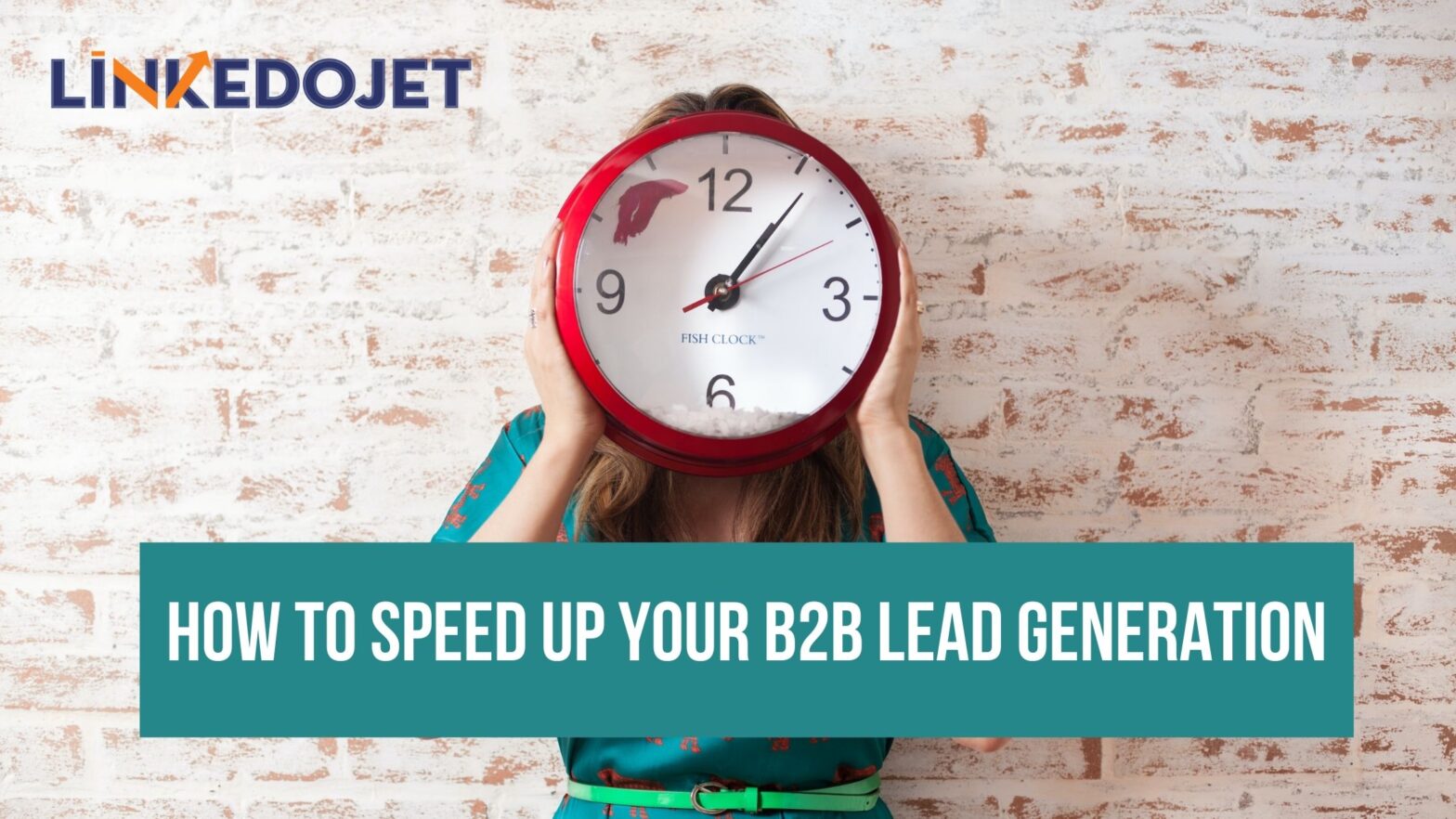“B2B lead generation is damn easy!”
Did you hear anyone say that ever?
Probably not!
That’s because B2B lead generation involves collecting your prospective customer’s information, such as name, company name, job title, email, and sending them personalized messages to make sales.
Read: How to use LinkedIn Sales Navigator to BOOM your lead generation?
And the end goal of B2B lead generation is to create a consistent pipeline of prospects that eventually convert to your customers.
So, let’s discern the steps involved in B2B lead generation first!
Steps involved in B2B lead generation process

1. Finding B2B leads
Undoubtedly the first step!
Finding the contact information of your potential customers is the first thing you need to do.
And digital transformation is forcing businesses to change their lead generation tactics to match the new reality.
What’s interesting to note is that this change is driven by the customer!
2. Reaching out to your leads
Once you have a list of high-quality leads at your disposal, the next step is reaching out to them through personalized messages or replying to their queries.
Read: How to connect with C-level executives the right way?
3. Qualifying and segregating your leads
After your first interaction with the leads, you’ll need to measure who is more interested in your business and likely to convert to your customer.
For the purpose, you need to gauge the stage leads are at during the buying process. These stages include:
- Research and Awareness – The prospect is aware of the problem they have, or the solution they need, and learn more about it. At this stage, they’ll consume content like blogs, white papers, and case studies.
- Consideration – The lead knows exactly what product/service they need, and will now detail their specific needs before connecting with the suppliers.
- Decision – Filtering through multiple service providers that best suit their needs, the prospect will now have meetings with you to complete the purchase.
Not all leads will be at the same stage at the same time.
So, you have to tag your leads accordingly based on which stage of the sales cycle they are at.
4. Closing the leads
Bingo! The prospect finally choses you and the deal is done, after several calls and meetings.
But the average speed of B2B lead generation to conversion is 84 days.
However, these 84 days also mean lost deals because you forgot to follow up with the lead or followed them up with the wrong opportunity.
Also, it includes countless hours spent in gathering the data of the leads and reaching out to them with personalized messages.
So, is there any way to speed up your B2B lead generation process?
To answer this, let me pull your attention to some important facts:
- A study at MIT reveals that businesses who have embraced digital transformation are 26% more profitable than their peers.
- Digital transformation in B2B lead generation means replacing cold calling with social selling. And LinkedIn is the proverbial diamond in the rough sea of B2B lead generation.
With a thriving social network of over 600 million users, and a home to over 9 million business profiles from over 200 countries, only an imbecile would sideline LinkedIn for B2B lead generation.
86% of the businesses believe that cloud technology is cardinal to digital transformation.
Evaluating all these data, LinkedIn automation is the answer to speed up your B2B lead generation.
Benefits of LinkedIn automation for B2B lead generation
LinkedIn automation involves the use of third-party tools to automate sending connection invites, messages, view profiles, and follow selected pages on LinkedIn.
How will this benefit you?

Just think! If you can:
- Set up your LinkedIn marketing campaigns for the entire month in one go, with no hassles
- Save about 20 man-hours in managing your LinkedIn marketing and outreach campaigns
- Manage your multiple LinkedIn accounts from a single screen
- View the performance of your campaigns with exact data analysis
Won’t that improve your sales velocity?
Definitely, it will!
So, investing in a LinkedIn automation tool will be a wise decision to speed up your B2B lead generation process.
But the next challenge is which automation tool to invest in?
These pointers will help!
- Choose a cloud-based LinkedIn automation tool as it allows you to run your campaigns independent of your device or internet connection. Further, you save the operational cost and cost of using different desktops.
- Invest in a LinkedIn automation software that can be integrated with other third-party tools or tailored as per your requirements.
- Your ideal LinkedIn automation software should allow you to manage multiple LinkedIn accounts from a single dashboard
And the search for the right LinkedIn automation ends at Linkedojet!
What makes Linkedojet the right choice for your business?
There’s not one, but many reasons!
- Being a cloud-based automation tool, Linkedojet offers a single dashboard to handle multiple LinkedIn accounts without having to log in and log out repeatedly.
- Linkedojet analyzes your Linkedin outreach campaigns and creates reports which you can export to excel sheets or share it with your team in just one click.
- Linkedojet sets the amount of control your employee or team member has over the data you share with them
- Since Linkedojet mimics human activities on LinkedIn, there’s no chance of your LinkedIn account being banned.
Take away message
With fast-moving, always connected society, businesses have to adopt digital strategies and implement them seriously, if they wish to succeed in the coming months and years.
But this can get quite complex at first.
So, here’s how to get started:
- Think of implementing cloud solutions for your B2B lead generation, as they enable you to be agile and meet customer’s expectations on the go.
- Automate your lead generation process to save time and cost on non-productive tasks of your sales team.
- Personalize the experience for your customers with personalized outreach campaigns and evaluate the results to drive your future campaigns.
By focusing on these three parameters, you can successfully speed up your B2B lead generation, exceed customer expectations, and improve your customer’s experience.
So, have you started with cloud-based LinkedIn automation yet? If not, sign-up for a FREE demo here.
